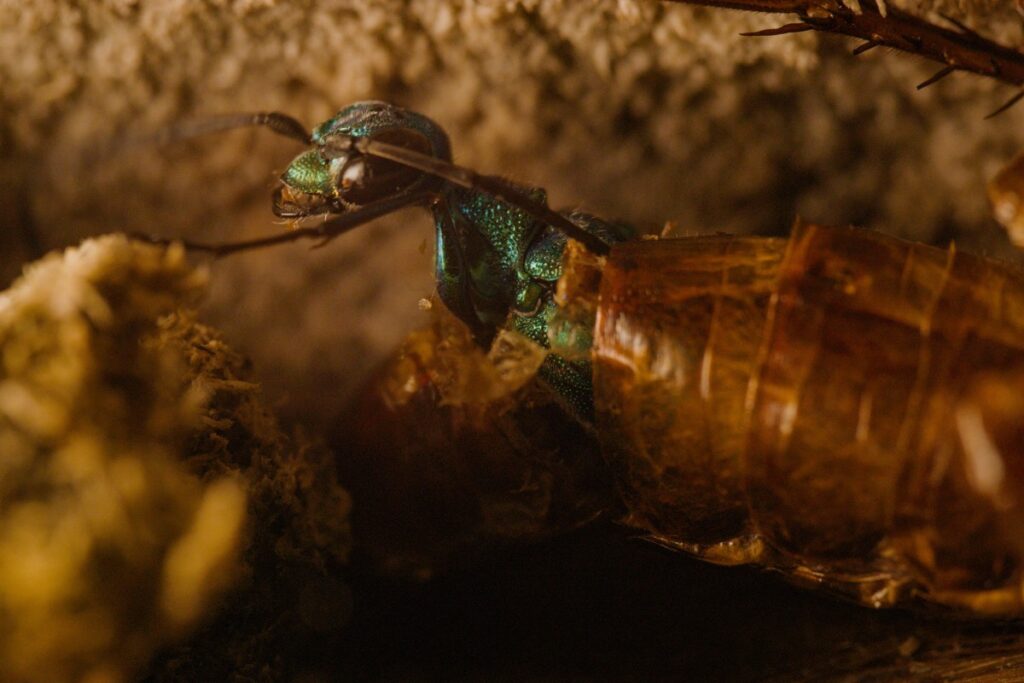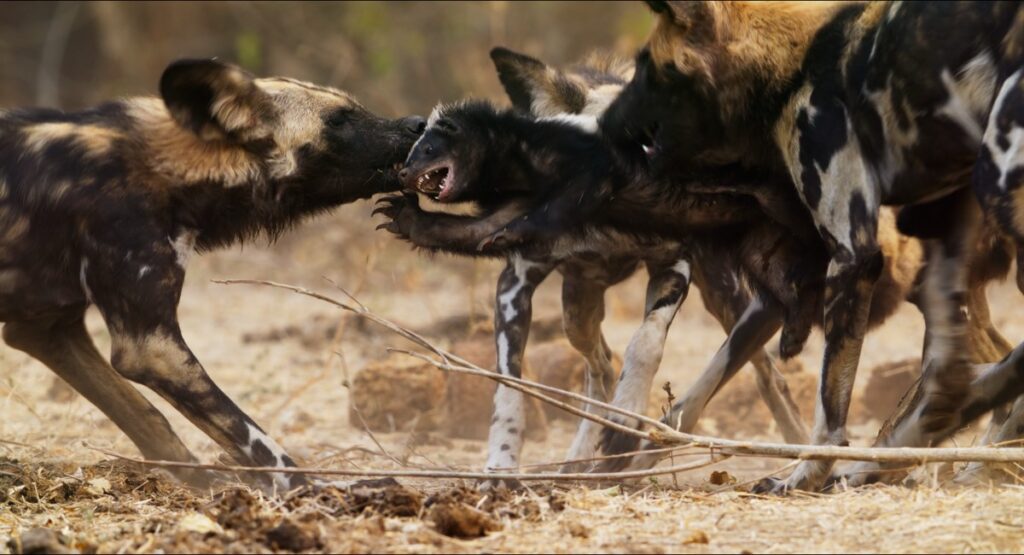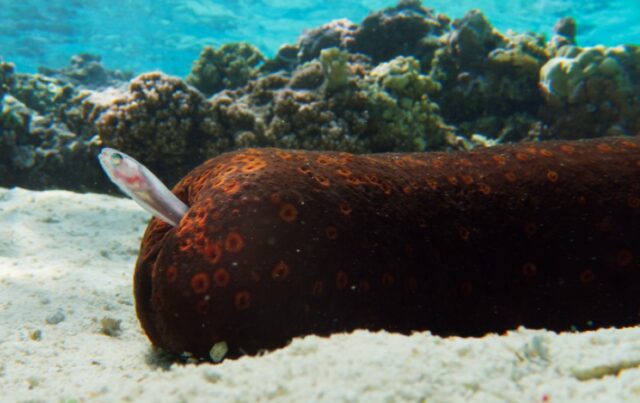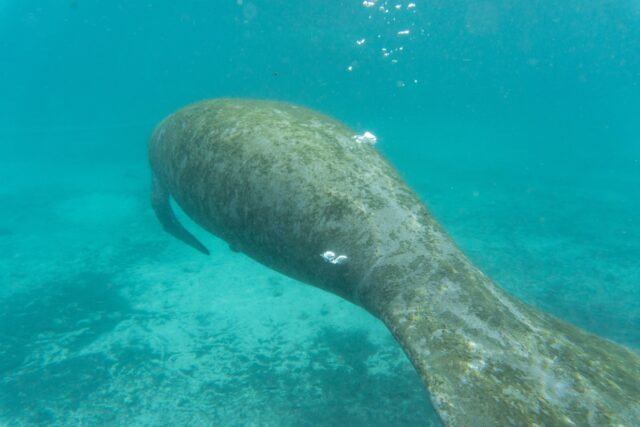National Geographic/Eleanor Paish
Madagascar’s aye-aye: “as if fear and panic had a baby and rolled it in dog hair”
National Geographic/Eleanor Paish
An emerald jewel wasp emerges from a cockroach.
National Geographic/Simon De Glanville
An emerald jewel wasp emerges from a cockroach.
National Geographic/Simon De Glanville
A pack of African hunting dogs is no match for the honey badger’s thick hide.
National Geographic/Tom Walker
“There is a sense after awhile that you’re playing the same animals to the same people, and the shows are starting to look the same and so is your audience,” Linfield told Ars. “We thought, okay, how can we do something absolutely the opposite? We’ve gone through our careers collecting stories of these weird and crazy creatures that don’t end up in the script because they’re not big or sexy and they live under a rock. But they often have the best life histories and the craziest superpowers.”
Case in point: the velvet worm featured in the “Superheroes” episode, which creeps up on unsuspecting prey before squirting disgusting slime all over their food. (It’s a handy defense mechanism, too, against predators like the wolf spider.)
Once Linfield and Berlowitz decided to focus on nature’s underdogs and to take a more humorous approach, Ryan Reynolds became their top choice for a narrator—the anti-Richard Attenborough. As luck would have it, the pair shared an agent with the mega-star. So even though they thought there was no way Reynolds would agree to the project, they put together a sizzle reel, complete with a “fake Canadian Ryan Reynolds sound-alike” doing the narration. Reynolds was on set when he received the reel, and loved it so much he recoded his own narration for the footage and sent it back.
“From that moment he was in,” said Linfield, and Wildstar Films worked closely with Reynolds and his company to develop the final series. “We’ve never worked that way on a series before, a joint collaboration from day one,” Berlowitz admitted. But it worked: the end result strikes the perfect balance between scientific revelation and accurate natural history, and an edgy comic tone.
That tone is quintessential Reynolds, and while he did mostly follow the script (which his team helped write), Linfield and Berlowitz admit there was also a fair amount of improvisation—not all of it PG-13. “What we hadn’t appreciated is that he’s an incredible improv performer,” said Berlowitz. “He can’t help himself. He gets into character and starts riffing off [the footage]. There are some takes that we definitely couldn’t use, that potentially would fit a slightly more Hulu audience.” Some of the ad-libs made it into the final episodes, however—like Reynolds describing an Aye-Aye as “if fear and panic had a baby and rolled it in dog hair”—even though it meant going back and doing a bit of recutting to get the new lines to fit.









